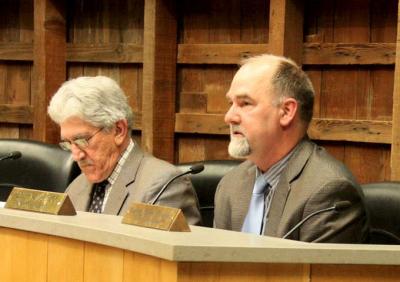Van Scoyoc to Run for Town Supervisor in November
Van Scoyoc to Run for Town Supervisor in November

Peter Van Scoyoc, East Hampton Town's deputy supervisor, announced on Monday that he would seek the office of supervisor in the Nov. 7 election. The announcement follows Supervisor Larry Cantwell's January announcement that he would not seek a third two-year term.
Mr. Van Scoyoc, who was elected to the town board in 2011 and re-elected four years later, will face Manny Vilar, who will run for supervisor on the Republican ticket.
In a statement delivered by email, Mr. Van Scoyoc said that he offers a vision for the town's future "that is forever diligent about protecting our natural resources, open space, and environment," a future "that includes more opportunities for our residents who want to live and work here and have a place to live," and in which "we accept our diversity, understand our differences, and work together for the betterment of our community."
The statement notes the councilman's 16 years of experience as a public official, including six years' service on the town's planning board, five years on the zoning board of appeals, and five years on the town board.
The present town board, he said, has "restored dignity and respect to the process of local government." Continuing the openness and cooperation that he said now characterizes the board "is paramount to producing effective government, an important dynamic that was sorely lacking before the current town board took office and that is clearly missing in Washington today."
He cited progress on issues including water quality protection and improvement; open space, environmental restoration, and historic preservation; ensuring continued beach access rights; addressing coastal erosion, and enforcement of quality of life issues including "the Montauk party scene."
He also pointed to airport noise restrictions and energy efficiency and sustainability as issues on which the board has had a positive impact.







